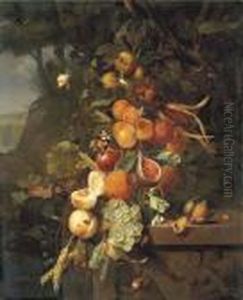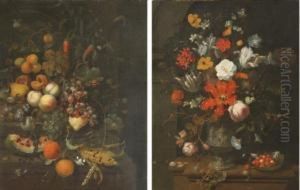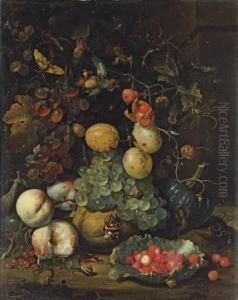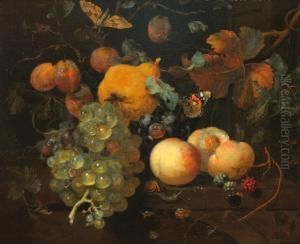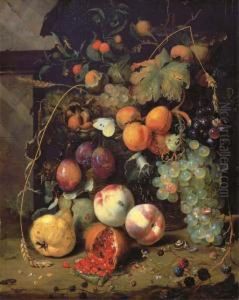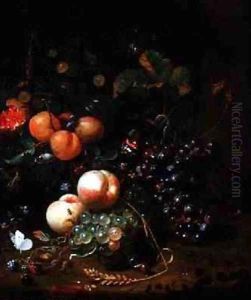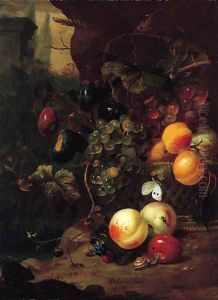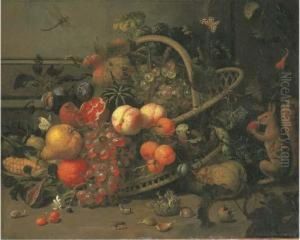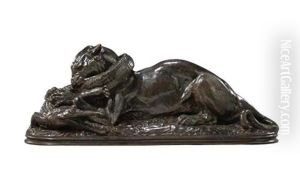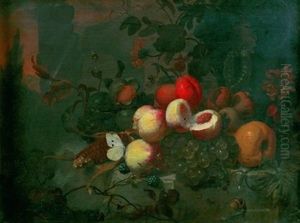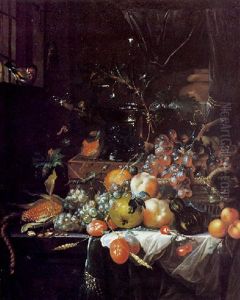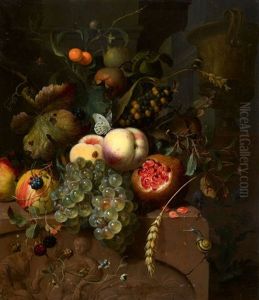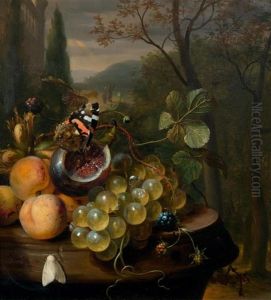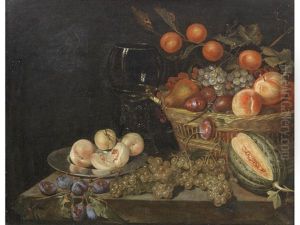Jan Mortel Paintings
Jan Mortel was a Dutch painter specialized in still-life works, particularly known for his detailed and vivid depictions of flowers and fruits. Born in Leiden in the Netherlands in 1650, Mortel grew up in an artistic environment that was rich with the Dutch Golden Age painting tradition. Throughout his career, Mortel developed a reputation for his ability to capture the texture and color of botanical subjects with high precision.
Mortel likely received his artistic training in his hometown, which was a vibrant center for painters at the time. He was particularly influenced by the works of earlier Dutch still-life painters, such as Jan Davidsz. de Heem and Willem van Aelst, whose elaborate compositions and intricate handling of light and texture set a high standard for artists in the genre.
In 1672, Mortel became a member of the Leiden Guild of St. Luke, an association of artists, which further solidified his standing as a professional painter. He spent most of his life in Leiden, where he worked and took on students, passing on his meticulous techniques to the next generation of still-life painters.
Jan Mortel's paintings are characterized by their lush arrangements of flowers, often set against a dark background that serves to highlight the naturalistic details and vibrant colors of the petals and leaves. He also painted fruit still lifes and occasionally included insects or small animals, adding a sense of life and movement to his compositions.
Mortel's work was highly sought after during his lifetime, and he enjoyed the patronage of wealthy Dutch merchants and art collectors who were keen to decorate their homes with his opulent and detailed still lifes. Despite this, not much is known about his personal life, and he did not leave behind a large body of work, possibly due to the time-consuming nature of his painting technique.
After his death in 1719, Jan Mortel's contributions to the still-life genre continued to influence Dutch painters, and his works are now held in various museums and private collections around the world, celebrated for their technical mastery and timeless beauty.

